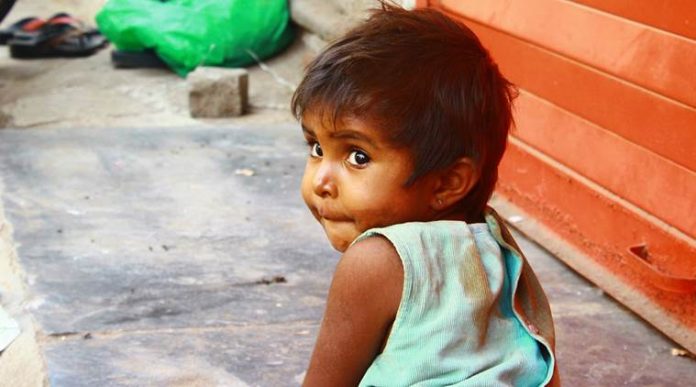By Oommen Kurian
At a time when Indias sex ratio at birth is low and declining — from 909 (2011) to 887 (2014) — there are, in poor, populous Uttar Pradesh, districts such as Aligarh, Moradabad, Mainpuri, Deoria and Balrampur, with sex ratios at birth exceeding 1,000 — in other words, better than any state in India.
So, too, with the infant mortality rate (IMR) and maternal mortality ratio (MMR). Kanpur Nagar district in western Uttar Pradesh had an IMR of 37 in 2012-13, which was better than the Indian average (42). The state’s MMR is 258, but Meerut mandal in the west (including urban NOIDA and Ghaziabad) had an MMR of 151, better than the Indian average, although Devi Patan mandal, 600 km to the south-east had an MMR of 366, worse than Ethiopia and Haiti.
While Uttar Pradesh may appear to be a monolith of Hindi-speaking, overwhelmingly poor people with some of the country’s worst health parameters, a district-level analysis by Observer Research Foundation, using data from the Annual Health Survey (AHS 2012-13), reveals that India’s most-populous state has almost continental style variations in its healthcare system and indicators. The latest data from the National Family Health Survey (NFHS-2015-16) for Uttar Pradesh will be released only after the elections, scheduled for February 11 onwards.
AHS 2012-13 covered 21 million people across nine large, low-performing states and close to five million people in Uttar Pradesh alone. The AHS remains the world’s largest household sample survey, with its size greater than the population of Sri Lanka.
AHS gives major health indicators at the district level. The wealth of data collected by AHS remains an underutilised resource. The assembly elections may prove to be a good occasion to use it to promote policies that enhance well-being in the state. As the Economic Survey 2015-16 observed, investing in health and nutrition are two sure-shot ways of enhancing the productive potential of a state.
Within Uttar Pradesh, in 70 of 75 districts polled for AHS 2012-13, there are districts with a sex ratio of more than 1,000, such as Aligarh, Moradabad, Mainpuri, Deoria and Balrampur, and districts with a sex ratio at birth of under 850, such as Varanasi, Firozabad, Agra, Bijnor and Budaun.
Immunisation remains low in Uttar Pradesh, leaving many children at risk of preventable morbidity or death. In 2012-13, the state had fully immunised no more than 52.7 per cent of its children, with 7.6 per cent with no immunisation. The all-India average is 65.3 per cent for full immunisation and 6.6 per cent for no immunisation, for the year 2013-14.
Some districts with low proportions of fully immunised children, such as Shrawasti (24.9 per cent), Bahraich (27.5 per cent), Balrampur (36.4 per cent), Budaun (30.7 per cent), Kheri (37.8 per cent), Sitapur (35.4 per cent) and Sonbhadra (32.4 per cent), are potential epidemiological time bombs.
In Shrawasti, Balrampur and Sonbhadra districts, more than half the children do not receive a polio dose at birth. While India celebrates six years of being polio-free, outbreaks are still a risk.
District level infant mortality rates in UP is a picture of regional inequities
The IMR — or the probability of children below one year of age dying, expressed as deaths per 1,000 live births — provides indications about poverty and other socio-economic characteristics of a community, according to this 2012-13 AHS report.
With an IMR of 68 deaths per 1,000 live births in 2012-13, Uttar Pradesh continued to be the last among the states polled for the AHS.
A district-level analysis throws up wide disparities: the IMR in the north-eastern Shrawasti district is 96, almost three times the IMR of Kanpur Nagar (37) in the west.
Uttar Pradesh also has the highest neonatal mortality rate (NMR) among the AHS states: 49 neonatal deaths per 1,000 live births, whereas Jharkhand had the lowest at 23 per 1,000 live births. Within the state’s high NMR, again, are wide variations, indicating the precarious state of healthcare in large swathes of the state: Kanpur Nagar district has the lowest NMR of 24 per 1,000 live births, whereas Siddarthanagar to the east has the highest NMR of 70 per 1,000 live births.
A new government will need to address the inter-district disparities revealed in our analysis, particularly regions with high proportions of preventable infant deaths.
The state’s performance in terms of stunting (low height-for-age), wasting (low weight-for-height), underweight (low weight for- age) and undernourished (low Body Mass Index, or BMI) in children under five is among India’s worst.
Stunting among children under five years is highest in Uttar Pradesh (62 per cent), as is severe stunting (35.6 per cent), according to the 2014 Clinical, Anthropometric and Biochemical (CAB) survey. None of 70 districts surveyed for the AHS figured among 10 best-performing amongst 284 districts across nine states.
However, of the 10 worst-performing districts with stunted children, five were from Uttar Pradesh. The worst stunting among 284 AHS districts were found in Rae Bareli and the worst underweight outcomes in the western district of Hamirpur.
Surveyors found 77.4 per cent of children in Rae Bareli stunted, and 70.2 per cent children in Hamirpur underweight. Rae Bareli is not an extreme case: 55 of 70 districts have a stunting rate of more than 55 per cent, and 50 per cent of children are underweight in 23 districts.
There is a high proportion of overnutrition of children under five in some districts — mostly in western Uttar Pradeh — such as Pilibhit (24.6 per cent), Bulandshahr (21.8 per cent), Budaun (21.7 per cent), Auraiya (21.4 per cent) and Aligarh (21.1 per cent). In other words, the state has a dual burden of undernutrition and overnutrition, which will affect its morbidity rates and impact its economic growth.
A comprehensive policy overhaul may be necessary for the state to improve its performance in health and nutrition. The coming state elections provide political parties an opportunity to share with voters their vision for the future of its human development.

